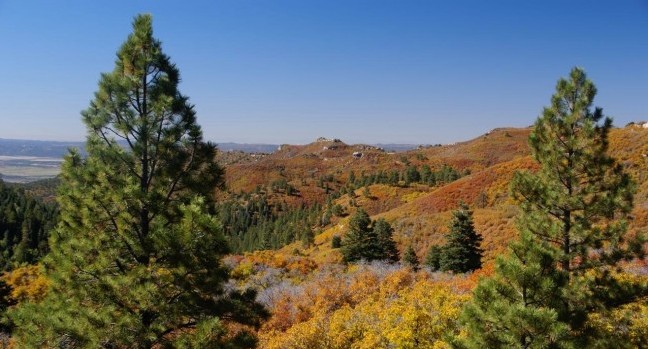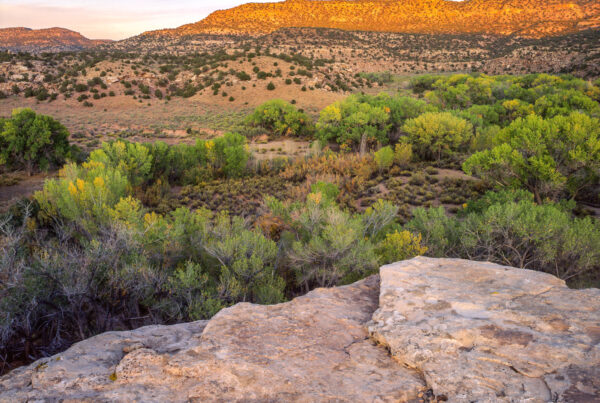It’s really no surprise that Colorado’s highest peaks attract the greatest attention from human visitors, smart phone cameras, Wilderness designations, and more – they are awe-inspiring and photogenic. However, most of us have come to know that the “lower and slower” landscapes have much to offer both their endemic species and human visitors, sometimes even more so than our peaks on high.
And so it is with the HD Mountains, just east of Bayfield and south of Highway 160, with their rolling ridges of old-growth Ponderosa rising up between cottonwood-lined streams and grassy meadows ringed with tree-sized Gambel oaks. Abundant bear populations forage and frolic in the summer, and during the winter months the large herd of mule deer browses on the shrubs and forbs after a summer season high in the San Juan Mountains.
Ardent followers of the Alliance will remember that protecting and defending the HD Mountains has been a primary interest of ours for decades. You know how it goes: the less-flashy and lesser-known gems of nature often need extra doses of energy to keep them protected and whole. This is especially true when fluid fossil fuels lie below the forest floor as they do in the HDs.
The HDs are already studded with a few dozen natural gas wellsites. The visual impact, acreage directly impacted, and the “52/24/7” noise generated from the wellsites are not the only impacts to the HDs. Remember, each wellsite requires a road (wide and straight enough for a drill rig), a corridor for pipelines, and sometimes electrical power lines, too. Of course, there’s multi-thousand horsepower compressors, water extractors, pump stations and on and on. Don’t let anyone tell you that this is anything other than industrialization.
But in addition to the natural gas sites that are already established, right now there are gas extraction schemes both envisioned and already in the planning phase that not only surround the HDs but also plunge straight into its heart. And some of you must be wondering, “Is someone really wanting to invest in natural gas extraction when we have a glut of it?”
With the nation figuratively swimming in natural gas with its low price, huge “stockpile” and projected low prices for years ahead, one would think that investing in commodities in high demand (solar panels and toilet paper?) might be a smarter investment that would also, of course, leave more of our public lands intact. But nonetheless, the Bureau of Land Management (BLM) that “manages” natural gas leasing continues to greenlight more and more leasing and development on our public lands. Certainly, legislative and administrative actions are sorely needed at the federal level to alter the BLM’s misguided trajectory.
Some of you are surely thinking that strong protections are guaranteed in the HDs because half the range is designated as a Colorado Roadless Area. Unfortunately, while there are stipulations attached to the development of natural gas leases on the San Juan National Forest, they are not ironclad; many of them can be “excepted, modified or waived.” Therefore, what we would hope to be strong protections for the forty square miles of HD Roadless Area are not necessarily stringent or reliable.
So, what lies ahead of us? With about 25 miles of dual pipelines, a dozen wellheads, and additional well access roads either recently approved or in the planning pipeline, we will need to muster our efforts, resources and capacity to hold back the push for unnecessary natural gas development as much as possible.
Your SJCA membership, your monetary donations, your comment writing, and your overall awareness and support of the need to maintain the HD Mountains as a quiet, wildlife-rich and road-free landscape are the bulwark we must maintain against the incessant industrial onslaught of our public lands.


